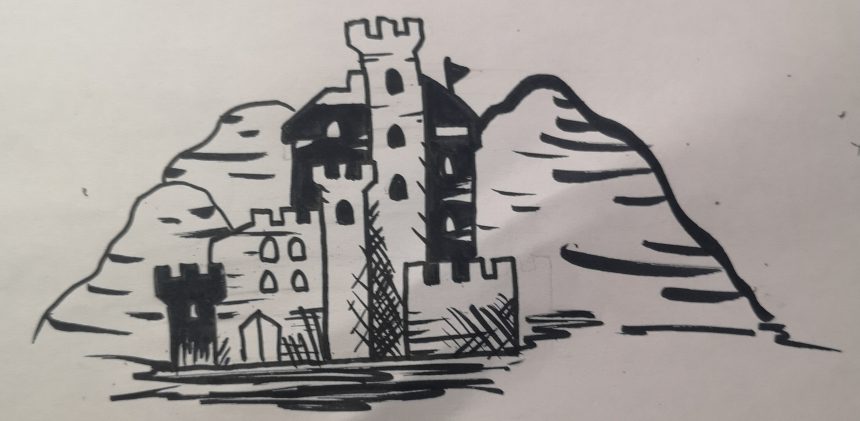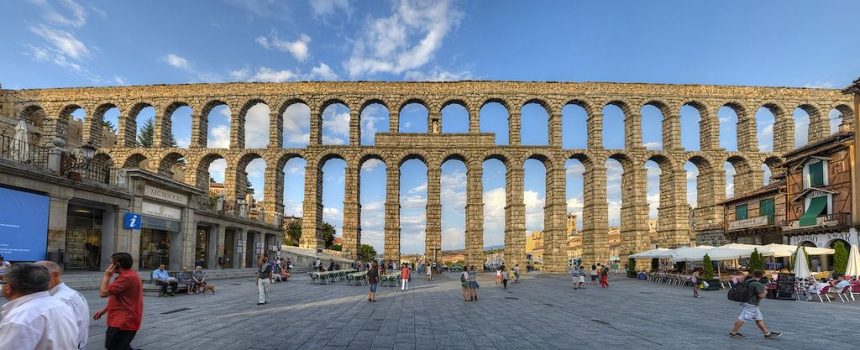U8-Cultural Heritage
What is the heritage?

HERITAGE: set of assets acquired by inheritance
CULTURAL: Regarding culture CULTURE SET of lifestyles, customs, knowledge, and degree of artistic, scientific, industrial development, in an epoch, social group, etc.
According to its value:
- Historical heritage
- Artistic heritage
- Cultural heritage
To identify a culture solely by the set of its monuments is a mistake. An attitude that ended in the 19th century.
In the 2nd half 20TH CENTURY is formulated the concept of CULTURAL ASSET that will integrate objects with historical or artistic value.
CULTURAL ASSET
As a result of the Second World War, many countries had lost their signs of cultural identity. In industrially developed countries, interest in objects and activities from hitherto neglected sectors, began to spread.
TRADITIONAL HISTORY had focused on the great political events, military events, scientific conquests, discoveries, …
NEW HISTORY centers its interest in man and his existence, the instruments of work, the utensils of everyday use showing an all-encompassing dimension and therefore the vestiges to be preserved.
IDENTITY monument works of art, antiques, historical documents, habits, customs, economy, production, gastronomy … witnesses of a culture.
The following are cultural assets:
- Monumental architecture
- Works of art
- Minor or popular architecture
- Military and defensive architecture
- Witnesses at work (tools)
- Witnesses of industrial production
- Witnesses to agricultural culture
- Witnesses to the gastronomic culture
The first use of the term «cultural asset» in an official document was in the 1954 HAGUE Convention, to agree on the protection of cultural property. It contemplated movable and immovable property with great importance for the culture of the peoples.
In 1972, UNESCO proposed a new classification of cultural property: Monuments: architecture, sculpture, painting, archaeology, caverns, inscriptions, elements of universal value from the point of view of history, art, or science.
Sets: groups of constructions which had exceptional value from the historical, art or science point of view.
Places: works of man and nature with universal value from the historical, aesthetic, ethnological or anthropological point of view.
Why preserving heritage?
Preservation is a method of not losing the values of cultural identity.
To preserve before you know what the Cultural assets of a people are: CATALOG.
All goods contained in catalogues must be protected and preserved.
But not only these ones, before any action we make as architects, we must think about the value of the good on which we will intervene before deciding the type of intervention.
The values of the Heritage:
- Cultural value
- Artistic value/Aesthetic value
- Historical value
- Value of authenticity
- Value of antiquity
- Funcional/Social value
- Economic value
What we have to preserve?
Not only the physical architectural heritage but also its values.
Every aspect of a building must be taken care of:
- Matter
- Construction techniques
- Shapes, dimensions
- Colours, materials, textures
- Character
- Use
- Environment
- Meanings
Valuing: let the building display and explain its values.

How to preserve?
A Legislative instrument
- TO PROTECT
From Latin protectio(n-)
Legal actions, administrative rules outside the intervention on the monument itself. It is exercised through standards or through the development of cataloguing tools. Different degrees of protection are often differentiated. It is often said to be protected or safeguarded through the conservatorship (legal).
2.INVENTORY
From Latin inventarium, literally ‘a list of what is found’.
Enumeration y description. The inventory is the result of list, to locate and describe a set of properties. It is an important instrument for preventive conservation.
3.TO LIST
From late Latin catalogus, from Greek katalogos, ‘pick out or enrol’.
The action of cataloguing involves the enumeration, description, and location of a property. This action is usually linked to general actions or protection planning. The LIST is an important instrument of indirect and preventive conservation
B interventions
PRESERVATION (>environment)
From the Latin praeservare.
Operations to be performed on the good to ensure survival against hazards or possible damages. Impact on the preventive aspect. Actions of this type are the decrease of the flow of tourists entering the monument or the reduction of the traffic nearby.
MAINTENANCE
From Latin «manu tenere» (holad with hand)
General meaning: continuous maintenance, through punctual repairs, in a state of efficiency, in conditions to be used. An operation designed to prolong and maintain if possible, the materials from which the object is made. Preserve the building’s material, it is character, its meaning, it is essence, while maintaining its maximum useful life. Maintenance is one of the most recommended actions to avoid «radical» changes in an historical building.
CONSOLIDATION
From Latin consolidatio, cum-solidare (da solidus, solid).
Consolidation is a particular way of preserving; it is possible thanks to a general strengthening.
REPARING(> elements of construction)
From Latin reparare.
Literally, leave in good condition an object that was broken or deteriorated. In the case of buildings, it means to fix the damaged parts.
RESTORATION (>aesthetic)
From Latin restaurare (stand up, fix, set up).
It supposes a direct intervention on the monument whose purpose is the restitution or improvement of the legibility that is lost with the passage of time.
ADAPTATION (>function)
From Latin adaptare «adjust”.
Enable or return something to its old state of efficiency or functionality.
RECONSTRUCTION (>identity)
From Latin ricostruire, ri- (again) com (together) and struere (to pile up)
It is a procedure of integral or partial reconstruction of the building, with exceptional character that has been carried out in specific historical circumstances and because of traumatic events.
ANASTILOSIS (>musealización)
From Greek: aneà (top) and stylos (column)
Anastylosis is an archaeological term for a technique whereby a ruined building or monument is rebuilt using original architectural elements.
REPRISTINAR (>historia)
From latin ripristino, composed by ri (again) and pristinus (previous).
Ripristinar means returning a building to a known earlier state by removing accretion or by reassembling existing elements. It is an action that tends to be generally rejected because the authenticity and age of the monument is usually lost.
